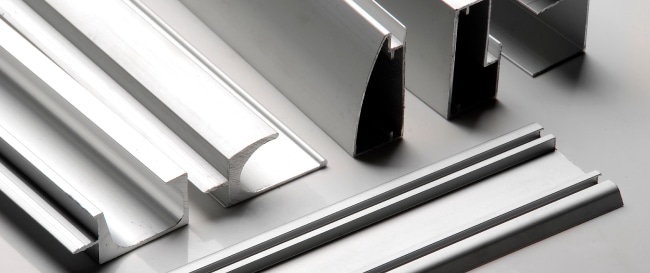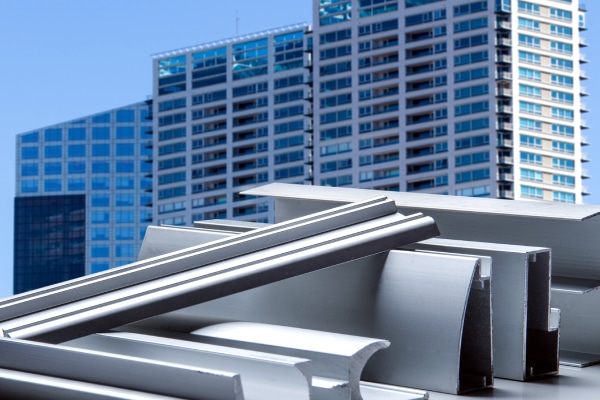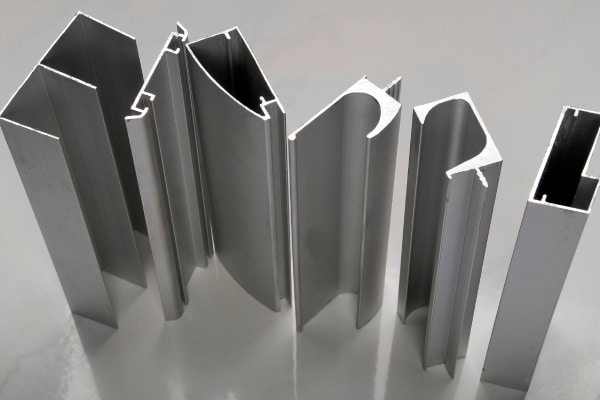Cold Roll Forming or Aluminium Extrusion?

Cold-rolling aluminium is an alternative to less efficient processes like press braking, extrusion and stamping. Ideal for tubes, frames, furniture and construction materials.
To ensure that you always have the right product for your needs, it is essential to understand the differences between cold-rolled forming aluminium and extruded aluminium.
Got a question?
Talk to the experts today, get the support that speaks your language...
What Is Aluminium Extrusion?
Aluminium alloy material is extruded through a die capable of producing a range of different shapes - the most common example of how it works is squeezing a tube of toothpaste. A ram will press the aluminium through the die and force the aluminium into whatever shape the die is.
The shapes that are most commonly extruded are:

Disadvantages of Aluminium Extrusion
Quality Issues: The flow of the materials into the die is not uniform, which means the tissue of the products is uneven. The extrusion products' surface layer, centre, head, and tail are inconsistent.
Die Issues: Aluminium extrusion is a harsh process; the moulds are subjected to high heat and three-way pressure. This combination impacts the life of the mould and its strength too.
Production Issues: The extrusion speed is lower than rolling, and the waste is higher - leading to a low yield when using the extrusion production method.
Budget Issues: Because the production method is of a lower yield it can lead to a lack of efficiency which will then interfere with cost and budget.
What Is The Cold Rolling Process?
The cold rolling process changes the properties of strips and sheets of metal. Sheets or strips of aluminium will be fed between two rollers, which compress the metal. The benefits of the cold rolling process are that it offers increased hardness, precision dimensional accuracy and a smoother surface.
The aluminium will pass through multiple rollers and bend incrementally and precisely, so a cumulative effect offers a higher quality of the final product. The machinery used in cold rolling offers a cost-efficient, high-volume and consistent production method.

Advantages Of Cold Rolling Aluminium
Accuracy: Cold rolling uses consecutive stages to bend components, giving tighter tolerance and higher accuracy. In conjunction with CAD, the metal forming process is given end-to-end consistency for a high-quality end product.
Cost: Cold-rolling produces material waste, allowing the final product to be more accurate. Using CRF, there will be fewer rejected pieces and seams and fewer cut-offs. As manufacturing volume rises, the cost per unit decreases and roll-forming businesses can pass these savings to the client.
Part Dimension:The roll-forming technique and associated equipment decrease the requirement for seams by enabling you to mould longer metal components in various lengths using only one set of tools. For example, stud and track machines can produce frames indefinitely. Roll-forming machinery can accommodate longer lengths of material than brake pressing and stamping operations.
Flexibility:Cold-rolling aluminium offers a high level of flexibility; components can be made up of intricate patterns or single bends - with complete uniformity and precision.
What’s The Difference Between Cold Roll Forming and Aluminium Extrusion?
The main differences between cold roll forming and aluminium extrusion are in the process, resulting product properties, and cost efficiency.
In cold roll forming, metal strips or sheets are compressed between two rollers, bending the aluminium incrementally and precisely. This process offers increased hardness, dimensional accuracy, and a smoother surface. Cold roll forming also allows for longer components with fewer seams, reducing material waste and increasing cost efficiency.
On the other hand, aluminium extrusion involves extruding aluminium alloy material through a die to create various shapes, such as hollow pipes and solid angles. However, this process can result in inconsistencies in product tissue and a lower yield due to uneven flow of materials and a harsh process.
Ultimately, the decision should be based on the specific requirements of the project and the desired outcome.
Get In Touch to Enquire About Cold Rolling Aluminium
You can contact our friendly, knowledgeable and experienced team for inquiries relating to the production of cold roll forming profiles and any cold roll forming inquiries via telephone, email, or filling out the contact form
Read more...
